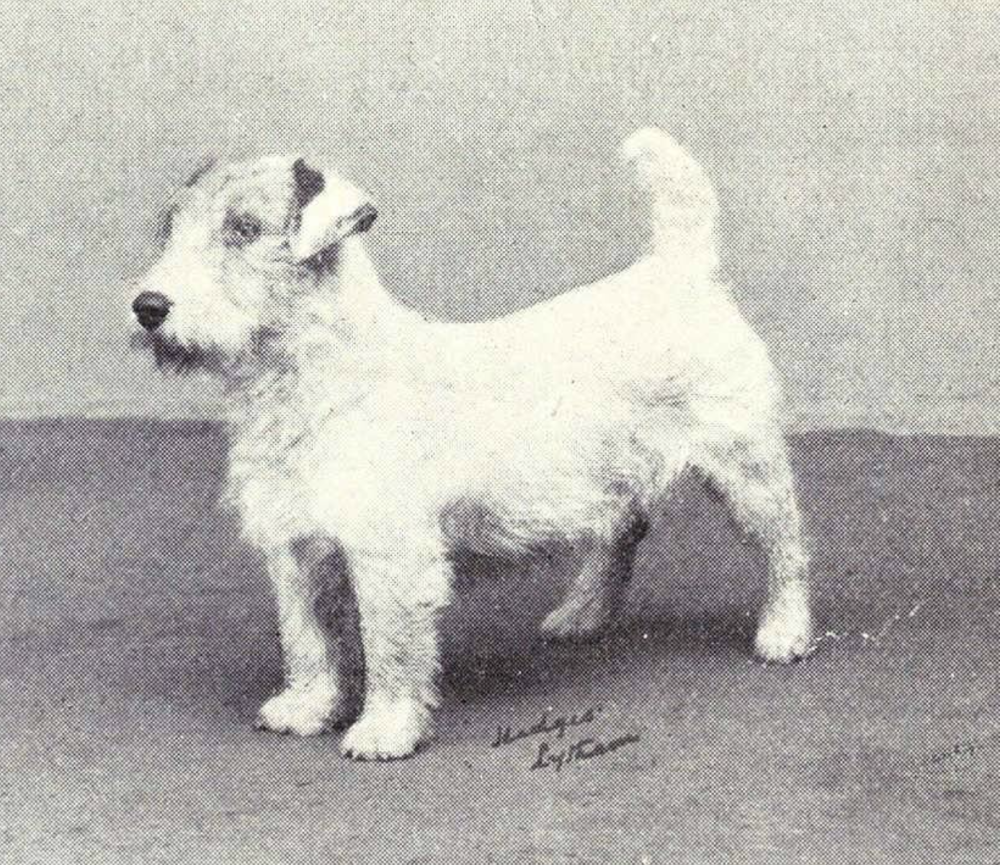
Sometimes, reinventing the mousetrap works, and sometimes it doesn’t.
Modern “designer breeds” aside (most created for all the wrong reasons), we’re referring to historical and fairly recent incidences of breeds intentionally created out of other breeds for specific reasons—–breeds that became successful enough to eventually gain recognition by an established registry; the Cesky Terrier and Alaskan Klee Kai being two examples that come to mind.
The Shelburne Terrier, however, never caught on.
Developed by J.Watson Webb around 1910, the Shelburne was the result of crossing Norfolk Terriers with Sealyham x Jack Russell Terriers. The goal was to create a small, versatile terrier suited for hunting purposes.
You see, Watson, and his wife, Electra, were active members of the Shelburne Hunt in Vermont and had raised Foxhounds. Webb knew that fox holes were smaller in the United States than they were in England, often because such holes in England had actually been made by badgers and later rehomed by foxes. Webb felt that most British terriers were simply too large to be of use in the American countryside. As Watson saw it, a smaller terrier was needed for “American-made” holes often created by a woodchuck, but into which a fox had moved. Knowing of no breed that fit the bill, Webb set out to make his own. It would be the right size, of course, but it would have to have the attributes of other breeds that Webb otherwise admired. Since the new breed wouldn’t have to have run with hounds, “running gear” wasn’t all that important. Digging and holding, however, was.
A Sealyham bitch imported into the US in 1911 was bred to a finished (champion) wire haired Fox Terrier. The resulting pups were breed to the offspring of a Norfolk Terrier x Westie, and pups out of that breeding gave Webb dogs that were smaller (roughly 12 pounds) and shorter in head and leg than the Sealyham Terrier. It was one of these pups that was Web’s foundation dog. In subsequent years, Webb tried breeding white out of the terriers, but otherwise, these were hardy, game little dogs.
As far as we can tell, that first “Shelburne Terrier” was named “Cricket,” a fact we gleaned from the account of a visitor who wrote of visiting Shelburne Farms on the shore of Lake Champlain. He noted a dark green marker with white lettering that read, “Cricket 1911-1923. First Shelburne Terrier.”
Scant information on the breed underscores the fact that the Shelburne failed to gain widespread recognition, let alone popularity. Its existence appears to have been limited to the efforts of Webb and the Shelburne Hunt.
What has endured is Shelburne Farms. Bought and developed by Wason Webb’s parents, the property was bequeathed to J. Watson Webb and Electra. In 1947, Electra founded the Shelburne Museum on the southern portion of the property, a museum that became an important cultural institution in Vermont by showcasing American folk art. In 1994, the southern portion that had been given to J. Watson and Electra was acquired from their descendants and combined with the northern portion to form the present-day 1,400-acre working farm and educational center. Judging from the website, the Farm looks like a remarkable and picturesque destination in Vermont.
As to why we bothered to mention the Shelburne Terrier, call it a reminder that not every invented breed gains traction, nor, perhaps, should it. With so little information available about the Shelburne Terrier, we may never know why the breed didn’t catch on, but part of us reasons that had there been an actual need for such a dog, it would have. At this moment in time, we conclude that only J. Watson thought there was.
Image: As we found no photos of a Shelburne Terrier, we use a vintage image of a Sealyham Terrier from 1915; shared under a Public Domain license from Picry
